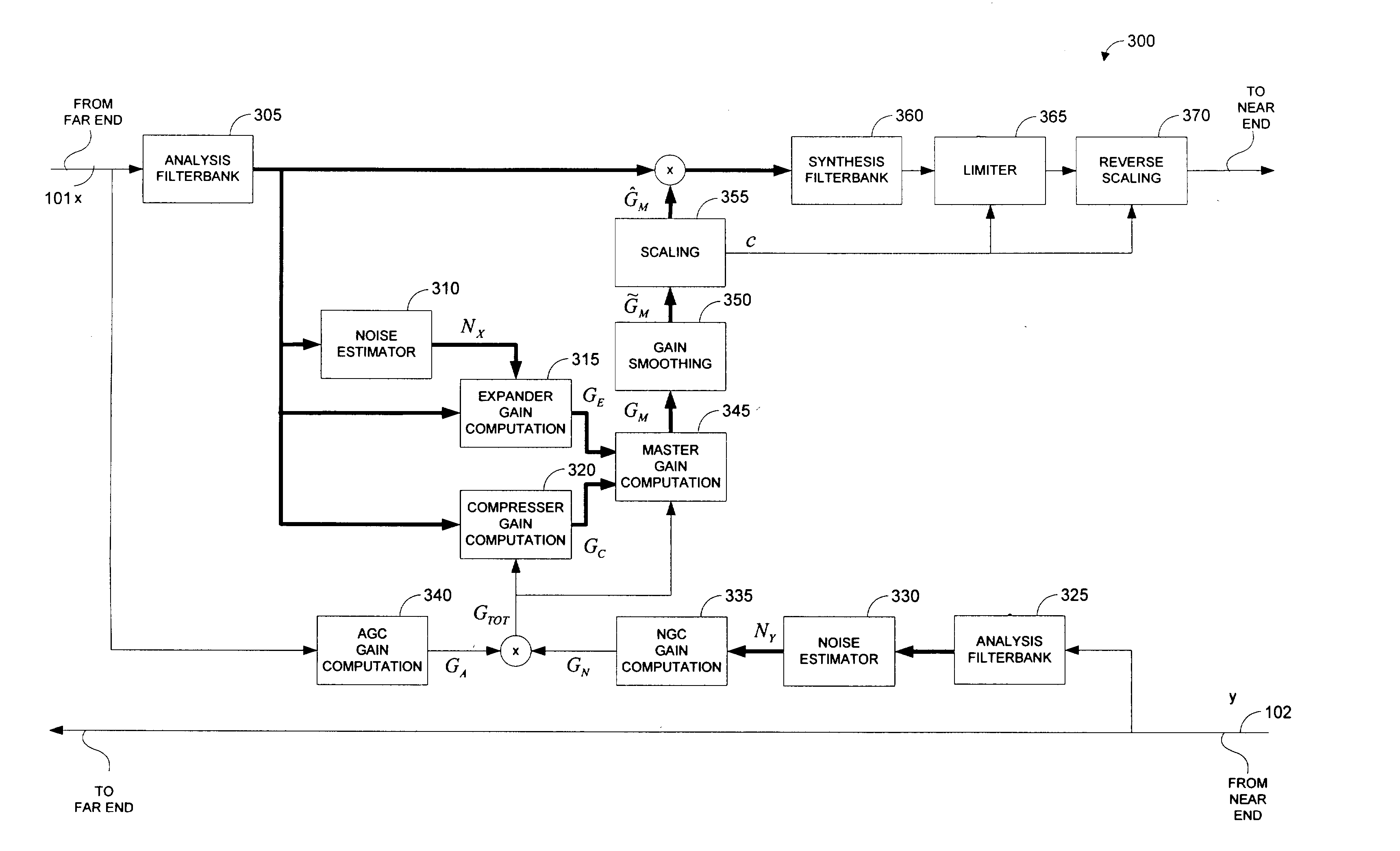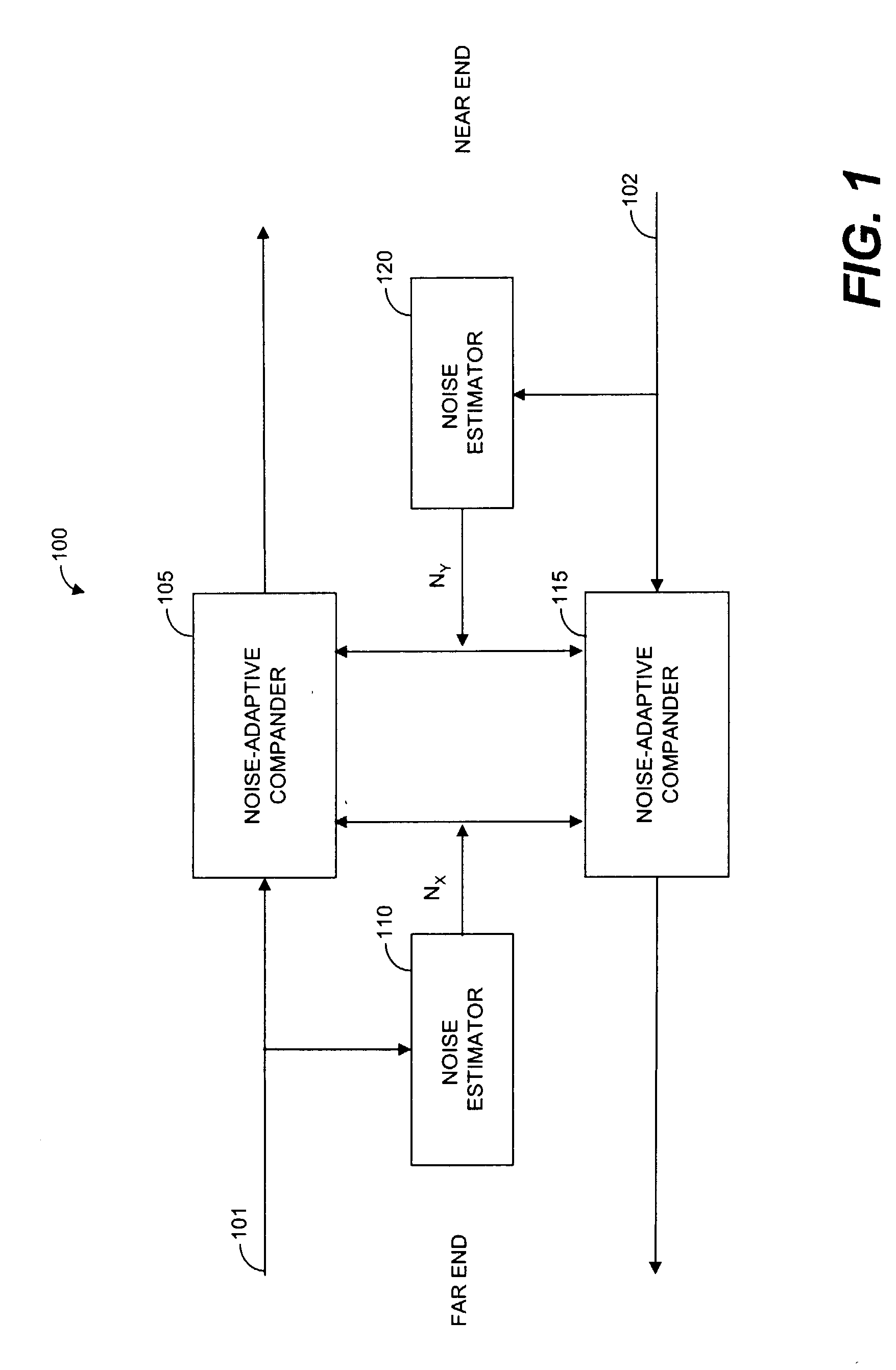Systems and methods for far-end noise reduction and near-end noise compensation in a mixed time-frequency domain compander to improve signal quality in communications systems
a technology of near-end noise and communication system, applied in the field of communication system, can solve the problems of inconvenient use of manual controls, ineffective compensation of background noise of the environment, and inability to compensate for the background noise of the environment, and achieve the effect of improving the clarity of the communication link
- Summary
- Abstract
- Description
- Claims
- Application Information
AI Technical Summary
Benefits of technology
Problems solved by technology
Method used
Image
Examples
Embodiment Construction
[0025] The present invention is typically embodied in a mixed time-frequency domain compander, where the expander and compressor are implemented in the frequency domain (subband signals), while the limiter and the linear gain sections are implemented in the time-domain (full band signal). Although the gain of the linear gain section is calculated using subband signals, the gain is applied to the full band signal via a scaling procedure. The scaling procedure first scales back the compander gain in the frequency domain by the scaling factor and then performs the reciprocal reverse scaling on the time-domain (full band) signal. If the linear gain were applied in the frequency-domain, overflow (clipping) could not be prevented in the time-domain. Although a single frequency component may well be under the clipping level, the sum of all frequency components, which is essentially calculated in the inverse Fourier transform, may result in overflow in the time domain, depending on the phas...
PUM
 Login to View More
Login to View More Abstract
Description
Claims
Application Information
 Login to View More
Login to View More - R&D
- Intellectual Property
- Life Sciences
- Materials
- Tech Scout
- Unparalleled Data Quality
- Higher Quality Content
- 60% Fewer Hallucinations
Browse by: Latest US Patents, China's latest patents, Technical Efficacy Thesaurus, Application Domain, Technology Topic, Popular Technical Reports.
© 2025 PatSnap. All rights reserved.Legal|Privacy policy|Modern Slavery Act Transparency Statement|Sitemap|About US| Contact US: help@patsnap.com



